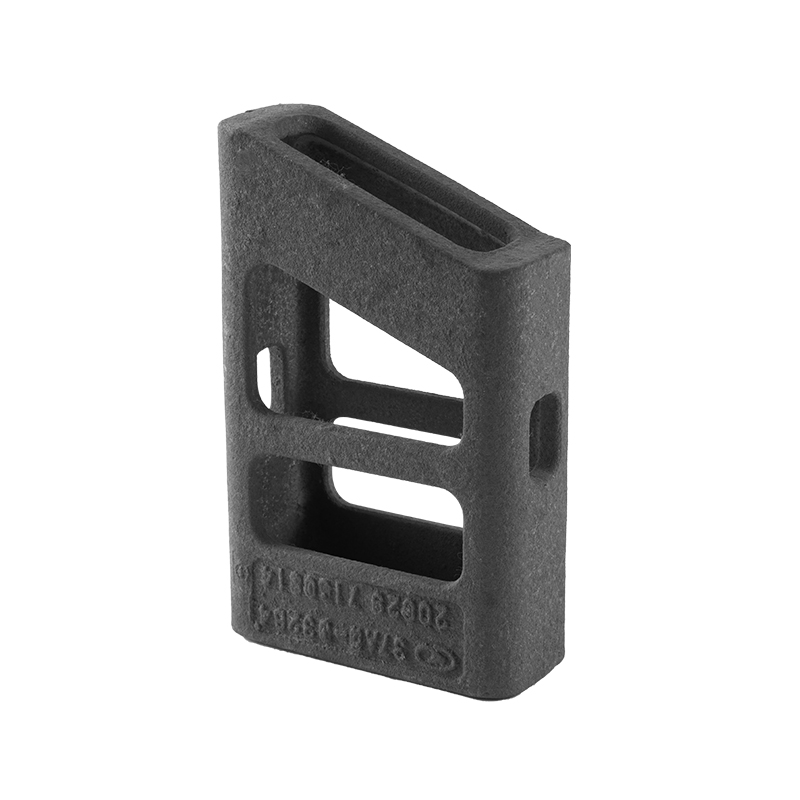Bracket Casting Parts: The Backbone of Structural Integrity
Industry News-Bracket casting parts are integral to many structures, providing support and stability in a variety of applications. They are often used in construction, automotive, and industrial settings where strength and precision are paramount.

Bracket casting parts are the unsung heroes of many engineering feats. They serve as the connecting pieces that hold structures together, whether it's a bridge, a building, or a piece of machinery. These parts are typically made from metals like steel or aluminum, chosen for their durability and resistance to corrosion. The casting process for brackets often involves precision die casting to ensure that each part fits perfectly within the larger assembly. This method allows for the creation of complex geometries with fine detail, making brackets not only functional but also aesthetically pleasing. The strength of a bracket casting part is a testament to the skill of the caster and the quality of the materials used. They must withstand the test of time and the rigors of their environment, whether that's the harsh conditions of an outdoor construction site or the high-stress demands of an automotive engine. As such, the production of bracket casting parts is a meticulous process, with quality control checks at every stage to ensure that each part meets the highest standards.
Custom die casting parts are the result of a highly specialized process that allows for the creation of unique, one-of-a-kind components. These parts are tailored to the specific needs of a project, making them indispensable in industries that demand bespoke solutions.
The world of manufacturing is filled with standardized parts, but when a project calls for something extraordinary, custom die casting parts are the answer. This process involves the use of a custom mold, or die, into which molten metal is poured. The result is a part that is an exact match to the design specifications, down to the smallest detail. Custom die casting parts are used in a wide range of applications, from aerospace components to intricate electronic devices. The process allows for the creation of parts with complex geometries that would be difficult to achieve through other manufacturing methods. It also enables the production of parts with tight tolerances, ensuring that each component fits and functions as intended. The precision of custom die casting parts is a reflection of the advanced technology and skilled craftsmanship that go into their production. Each part is a testament to the ingenuity of its creators and the capabilities of modern manufacturing techniques. As industries continue to evolve and the demand for specialized components grows, custom die casting parts will remain at the forefront of innovation.
Sand casting parts are a testament to the enduring nature of traditional casting techniques. They are produced using a method that has been utilized for thousands of years, yet still offers a viable solution for many modern manufacturing needs.
Sand casting is one of the oldest forms of casting, with a history that dates back to ancient civilizations. Despite its age, this method remains relevant today, particularly for producing parts with large, simple shapes or complex geometries that are difficult to achieve with other casting methods. In sand casting, a mold is created using sand, which is packed around a pattern to create a cavity in the shape of the desired part. Molten metal is then poured into this cavity, and as it cools, it takes on the shape of the mold. Once the metal has solidified, the sand mold is broken away, revealing the finished part. Sand casting parts are known for their strength and durability, making them ideal for applications where these qualities are essential. They are used in a variety of industries, including automotive, aerospace, and heavy machinery, where parts must withstand significant stress and wear. The sand casting process is also cost-effective, as it allows for the production of large quantities of parts with relatively low tooling costs. As technology advances, sand casting continues to be a reliable and practical choice for manufacturers seeking a balance between tradition and innovation.
 En
En
 русский
русский Español
Español عربى
عربى Deutsch
Deutsch















